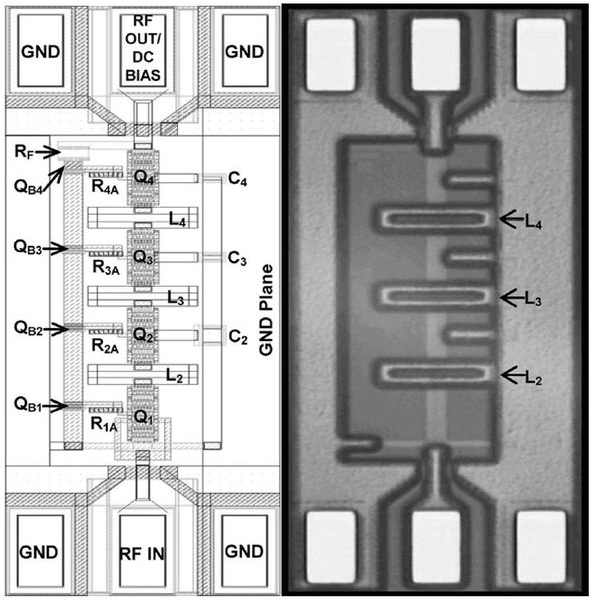Next Generation Wireless Amplifier Technology: BiSTA (Bipolar Stacked Transistor Architecture)
Web Published:
11/16/2021
A new design for an integrated circuit amplifier operating at very high frequencies. Current high frequency amplifiers use expensive III-V technologies (GaAs, InP). This invention uses commercial silicon technology.
Has this invention been tested?
- Yes, results have been published in 2 peer reviewed scientific journals.
- This design has been fabricated using IBM 8HP BiCMOS SiGe commercial technology.
- Two prototype amplifiers have been built, extensively tested and measured to operate at frequencies of 2.4 GHz and 30 GHz.
- 2.4 GHz measures: PSAT=18.55 dBm, PAE=32.0 %, VBIAS=3.23 V.
- 30 GHz measures: PSAT=19.0 dBm , PAE=11.5 %, VBIAS=5.06 V.

Fig. 1 - Bi-Polar Stacked Transistor Architecture
Advantages:
- low cost of production
- large & mature manufacturing base
- high reliability
- high integration, system-on-single-chip
- solutions
Commercial low frequency applications:
- cellular phone systems
- WiFi
- bluetooth amplifiers
Commercial high frequency applications:
- wireless-HDMI (blue-ray to TV interface)
- airport security imaging scanners
- medical imaging scanners
- automotive radar
- telecom long-haul back-end wireless communications (tower-to-back-office, tower-to-tower communication)
- building-to-building wireless communications
Military applications:
- satellite communications
- compact radar systems
- phased-array T/R systems
Patent Information:
| Title |
App Type |
Country |
Patent No. |
File Date |
Issued Date |
Patent Status |
| Bipolar Stacked Transistor Architecture |
US Utility |
United States |
8,791,759 |
3/22/2012 |
7/29/2014 |
Issued |
|
|
|
Inventors:
Keywords:
|